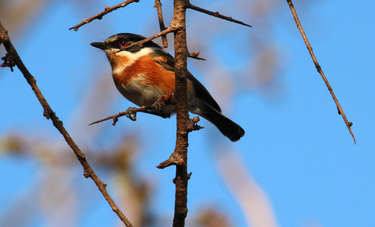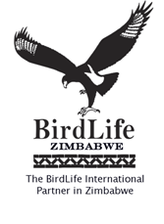BirdLife Zimbabwe

BirdLife Zimbabwe was founded in 1951 as the Rhodesian Ornithological Society (ROS) and became a full member in BirdLife International (BLI) in April 2002. BLI is a global partnership of 120 membership-based organisations that have a common interest in the conservation of birds and biodiversity. Our UK partner, the Royal Society for the Protection of Birds (RSPB) assists us with core funding.
Our fundamental purpose is to promote the survival of bird life in Zimbabwe and elsewhere for its intrinsic value and the enjoyment of future generations. Our strategic objectives are centered on species, sites/habitats, people and sustainability.
Birding in Zimbabwe is by far one of the most rewarding experiences any novice or serious birder can imagine. With over 670 species Zimbabwe boasts varied habitats ranging from the lower Zambezi’s Southern Carmine Bee-eater breeding sites to the Blue Swallow’s Eastern highlands montane grasslands. To really experience all that Zimbabwe has to offer you need to at least sample a couple of these habitats with their different birds.
Matopos is home to many raptor species, and is home to the highest concentration per square kilometre of Verreaux’s Eagle in the world. BLZ Matabeleland Branch has carried out an annual Verreaux’s Eagle Breeding survey since 1964. This year marks the 50th Anniversary of this survey, making it the longest running survey of its kind in the world.
A trip to the Matopos will satisfy the birder’s wish to identify raptors. The sighting of the Verreaux’s Eagle is virtually guaranteed… other resident raptors include the African Crowned Eagle, Martial Eagle, African Hawk-eagle, Augur Buzzard, Black-chested and Brown Snake-eagle, African Fish-eagle, Bateleur, Lanner Falcon,
African Harrier-hawk, Gabar Goshawk, Rock Kestrel to name but a few. The summer months bring many additional species of raptor that migrate to the south – for example the Yellow-billed and Black Kite, Wahlberg’s Eagle and Steppe Eagle. Along with this unusually high number of raptor species, many bush birds may be found. The Mocking Cliff-chat and Boulder Chat are regularly spotted at the camping and picnic sites situated in the Park. An average day’s birding in this extraordinary landscape should produce a very satisfactory personal list of species seen.
Visit BirdLife Zimbabwe's new website!
Our fundamental purpose is to promote the survival of bird life in Zimbabwe and elsewhere for its intrinsic value and the enjoyment of future generations. Our strategic objectives are centered on species, sites/habitats, people and sustainability.
Birding in Zimbabwe is by far one of the most rewarding experiences any novice or serious birder can imagine. With over 670 species Zimbabwe boasts varied habitats ranging from the lower Zambezi’s Southern Carmine Bee-eater breeding sites to the Blue Swallow’s Eastern highlands montane grasslands. To really experience all that Zimbabwe has to offer you need to at least sample a couple of these habitats with their different birds.
Matopos is home to many raptor species, and is home to the highest concentration per square kilometre of Verreaux’s Eagle in the world. BLZ Matabeleland Branch has carried out an annual Verreaux’s Eagle Breeding survey since 1964. This year marks the 50th Anniversary of this survey, making it the longest running survey of its kind in the world.
A trip to the Matopos will satisfy the birder’s wish to identify raptors. The sighting of the Verreaux’s Eagle is virtually guaranteed… other resident raptors include the African Crowned Eagle, Martial Eagle, African Hawk-eagle, Augur Buzzard, Black-chested and Brown Snake-eagle, African Fish-eagle, Bateleur, Lanner Falcon,
African Harrier-hawk, Gabar Goshawk, Rock Kestrel to name but a few. The summer months bring many additional species of raptor that migrate to the south – for example the Yellow-billed and Black Kite, Wahlberg’s Eagle and Steppe Eagle. Along with this unusually high number of raptor species, many bush birds may be found. The Mocking Cliff-chat and Boulder Chat are regularly spotted at the camping and picnic sites situated in the Park. An average day’s birding in this extraordinary landscape should produce a very satisfactory personal list of species seen.
Visit BirdLife Zimbabwe's new website!


